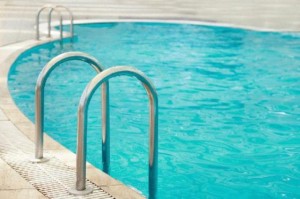 Whether your children are experienced swimmers or not, it’s always important to be aware of swimming safety. One fatal condition that swept the headlines this summer is known as secondary drowning.
Whether your children are experienced swimmers or not, it’s always important to be aware of swimming safety. One fatal condition that swept the headlines this summer is known as secondary drowning.
A young boy nearly lost his life after attending a pool party with friends. How? Earlier in the day, he was jokingly pushed into the pool, but was instantly rescued. He enjoyed the rest of the party and returned home where he started to feel lethargic and began coughing violently.
Luckily, his mom recognized these symptoms as secondary drowning and took him to the emergency room where doctors administered oxygen and saved his life.
What is secondary drowning?
Secondary drowning, sometimes referred to as dry drowning or parking lot drowning, is a potentially fatal medical condition in which water is inhaled into the lungs, causing swelling. The swelling restricts the lungs, not allowing them to exchange oxygen to the blood causing a drop in oxygen levels. A drop in oxygen levels will reduce the heart rate, affect brain activity and can eventually, in a worse-case-scenario, lead to death.
Just like the boy’s mother in the instance above, it’s important to be aware of the symptoms of secondary drowning as it can save your child’s life.
What are the symptoms of secondary drowning?
Symptoms of secondary drowning can appear up to twenty-four hours after a water accident and can include:
- Persistent coughing
- Chest pain or discomfort
- Fatigue
- Sudden changes in behavior
- Fever
- Shortness of breath
Symptoms of secondary drowning can be hard to diagnose because children are often tired from playing in the pool anyways, which is why it is important to keep an eye out for water inhalation.
How to prevent secondary drowning?
Secondary drowning can’t exactly be prevented, so it is important to be aware of the symptoms.
If it is caught early enough, secondary drowning is easily treated by administering oxygen at a hospital. However, if it is left untreated it can be fatal.

0 comments… add one